Comparison of Paper Stats to Our UrQMD Stats
I compare a few of the plots from the paper (Figs. 3, 4, and 6) with what we generated from UrQMD at 19.6 GeV. All images are using the same code to generate (my code in Python), so comparisons should be on equal footing. The results are not the same which leads me to speculate that the underlying data is dissimilar.
------------------------------------------------------------------------------------------------------------------------------------------------------------------------
Useful pages to know what's going on:
arxiv.org/abs/1910.08004
drupal.star.bnl.gov/STAR/blog/lisa/ring-weights-estimating-global-quantities-linear-sums
drupal.star.bnl.gov/STAR/blog/rjreed/centrality-epd-take-2
drupal.star.bnl.gov/STAR/blog/rjreed/epd-linear-weights-bias
Everything that follows is using 19.6 GeV data. The linked arXiv paper and this analysis (performed in tandem with Profs. Rosi Reed and Mike Lisa's) are both purported to be using UrQMD, though I do not have access to the raw data files from the paper.
The following is labeled Fig. 3 in the paper, and is essentially a reference multiplicity distribution for the following pseudorapidity ranges (as defined in the paper):
RefMult1 = N_ch within |η| < 0.5
RefMult2 = N_ch within 0.5 < |η| < 1.0
Fwd1 = N_ch within 2.1 < |η| < 3.0
Fwd2 = N_ch within 3.0 < |η| < 4.0
Fwd3 = N_ch within 4.0 < |η| < 5.0
FwdAll = N_ch within 2.1 < |η| < 5.1
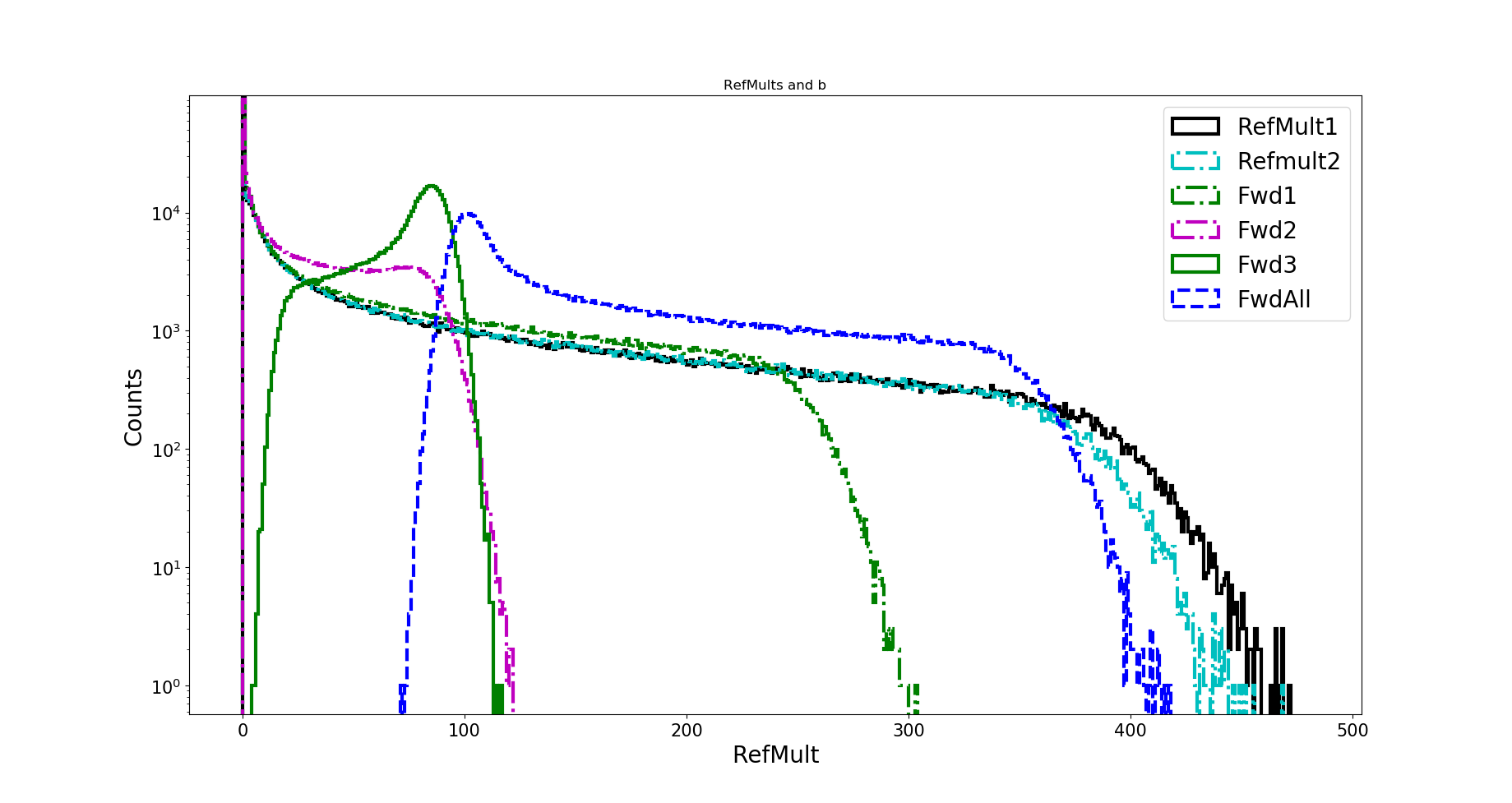
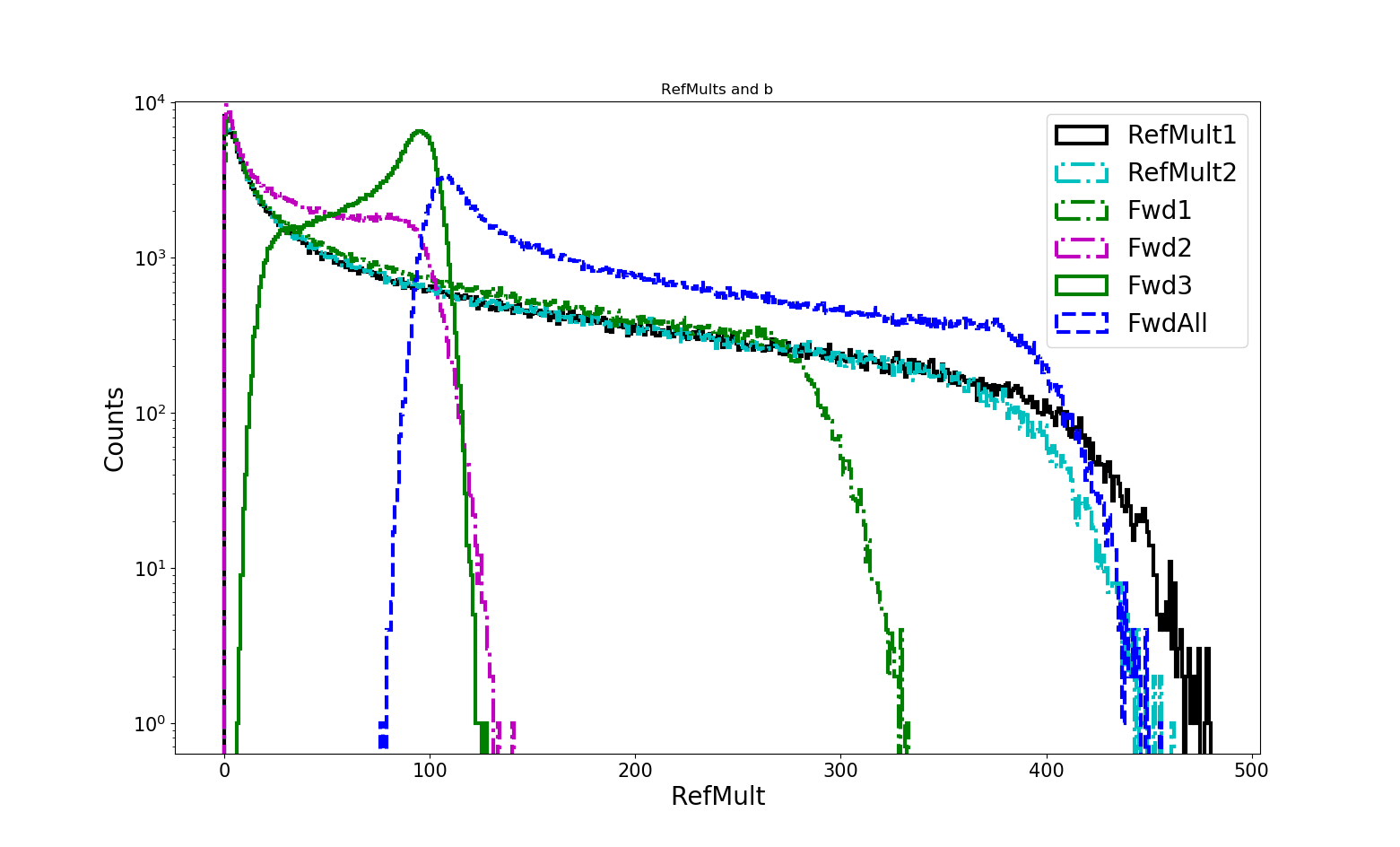
On the left is the data from the paper, and on the right is our UrQMD data.
The following is Fig. 4, which is refMult vs impact parameter (b):
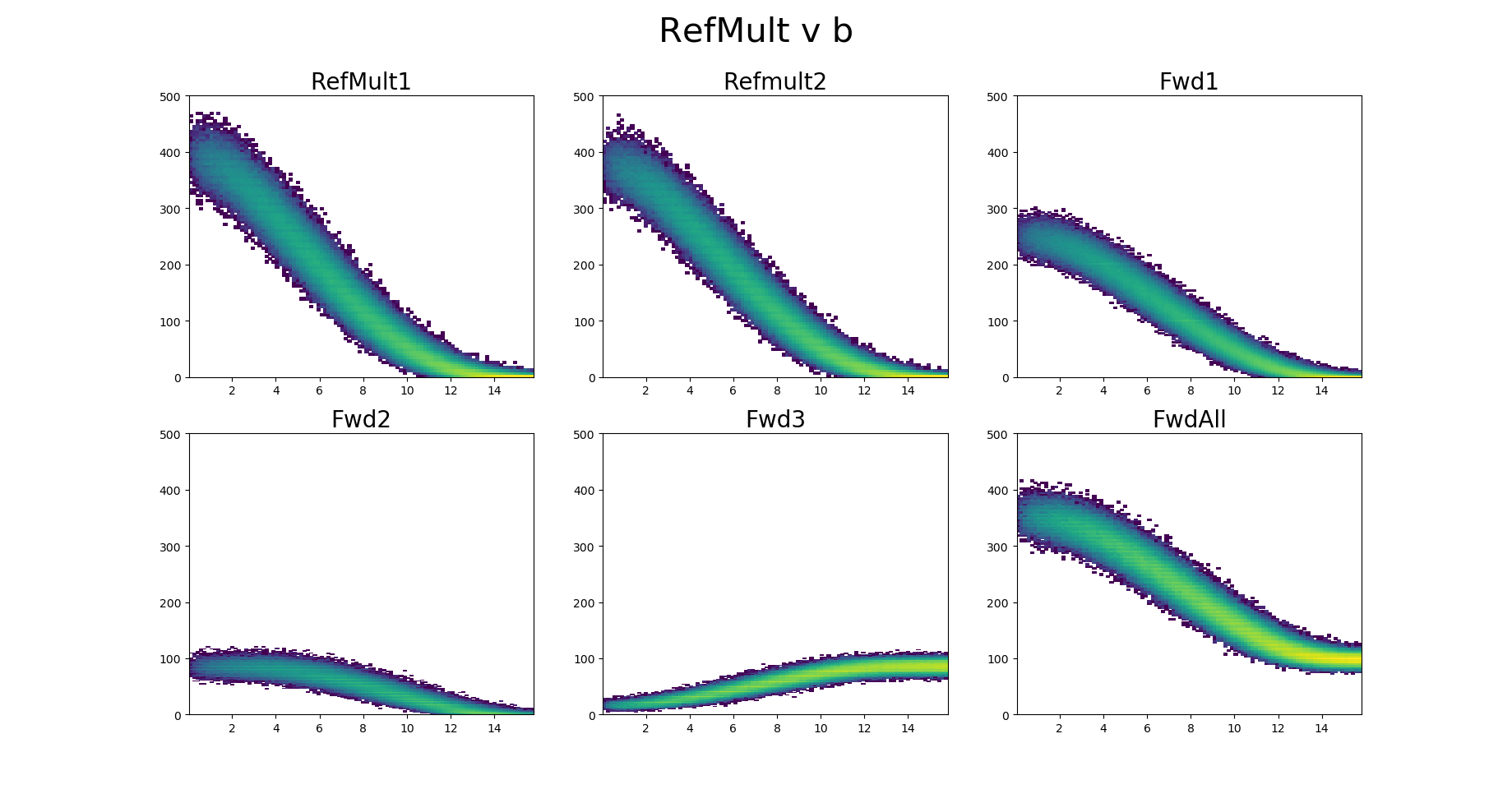
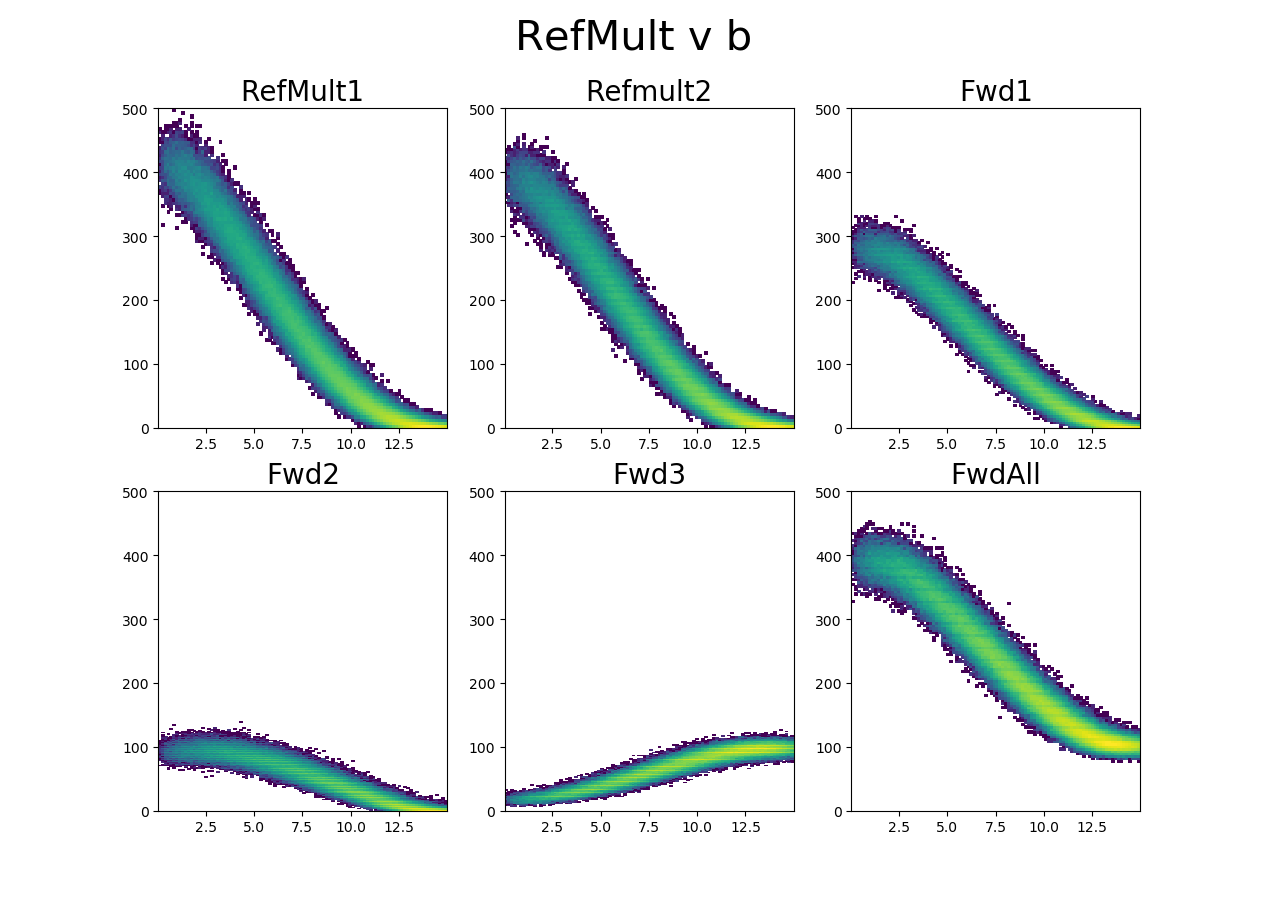
Again, the paper is on the left and our data on the right.
Lastly, Fig. 6 which compares variance in the impact parameter for various centrality ranges with the variance in the impact parameter distribution for the refMults in the same centrality ranges:

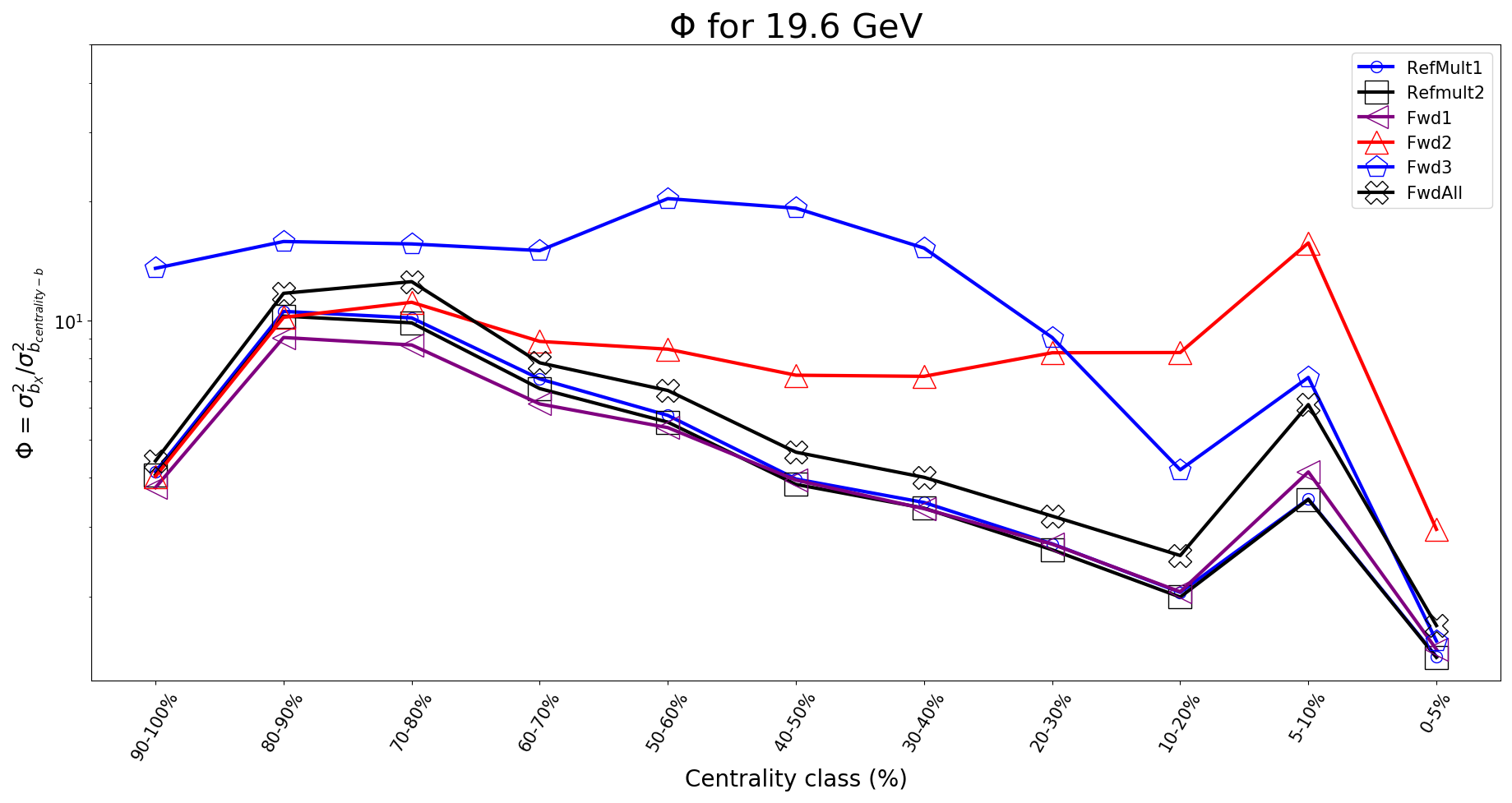
Again, paper on the left and our data on the right.
As these were using the same Python code, I'm inclined to speculate that the underlying data sets are different. It's of note that the data in the ROOT file from which the paper was generated is labeled AMPT; could it be that it's actually AMPT data and not UrQMD? In any case, the data sets for 19.6 GeV do not seem to match up.
- skk317's blog
- Login or register to post comments
